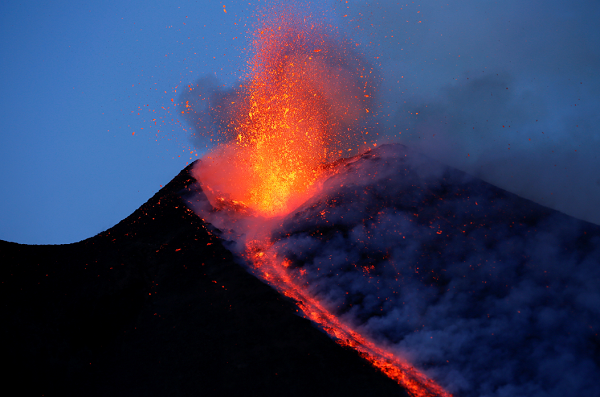Will Volcanoes Destroy The US? 55 Potentially Deadly Volcanoes Put Americans At Risk

Mount Enta blew lava up into the sky in Sicily, Italy Monday, according to reports. The 10,926-foot volcano is one of the most active volcanoes in the world, despite being dormant for the last two years.
After erupting about 30 miles away from Catania airport, which remained open following the eruption, the lava flow started to stop on Tuesday morning. Enta’s latest eruption comes weeks after a volcano in Hawaii spewed out hot lava for nearly a month. A portion of Kilauea, a volcano that has been relatively active in the eastern rift zone of Pu’u O’o, collapsed at the mountain's Kamokuna site on New Year’s Eve, causing a stream of lava to flow into the ocean for about six weeks. The firehose flow of lava finally stopped on Feb. 2., after a portion of the cliff collapsed covering the stream in which the lava was flowing from.
There are at least 169 active volcanoes in the US, 55 believed to pose a high/very high threat to people https://t.co/QXhKaKMM1a pic.twitter.com/0m3LjagSJ2
— Dr Janine Krippner (@janinekrippner) February 28, 2017
In the U.S., there are 169 active volcanoes, according to the U.S. Geological Survey. Fifty-five of the U.S.’ volcanoes could potentially be a high threat to people living near them, including Mount St. Helens in the Washington Cascades that killed 57 people and thousands of animals during a 1980 eruption.
“Most people in the U.S. perceive volcanic eruptions as rare, and [believe] that we’d be able to get advance notice because of the advance in science and instrumentation,” Estelle Chaussard, a State University of New York at Buffalo assistant professor of geophysics and volcanology, told The Atlantic Tuesday. “However, the massive eruption of Mount St. Helens, in Washington, was only 37 years ago, and it took until the volcano became active again in 2004 to start a truly comprehensive monitoring. ... This kind of assumption is therefore very dangerous, because most of our volcanoes are not as intensively monitored as we think they are or as they should be.”
© Copyright IBTimes 2025. All rights reserved.






















